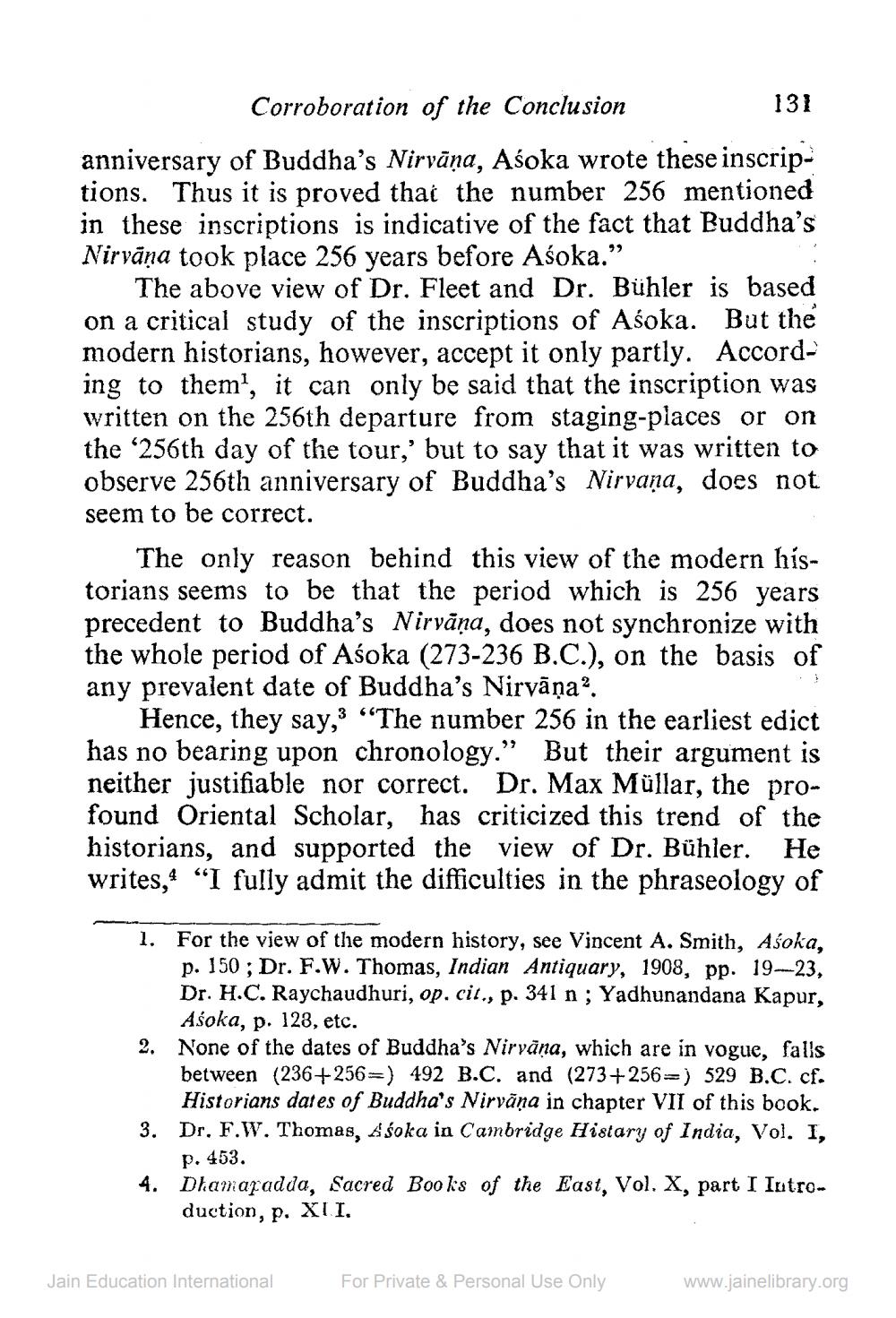________________
Corroboration of the Conclusion
anniversary of Buddha's Nirvāṇa, Aśoka wrote these inscriptions. Thus it is proved that the number 256 mentioned in these inscriptions is indicative of the fact that Buddha's Nirvāṇa took place 256 years before Aśoka."
The above view of Dr. Fleet and Dr. Bühler is based on a critical study of the inscriptions of Asoka. But the modern historians, however, accept it only partly. According to them', it can only be said that the inscription was written on the 256th departure from staging-places or on the '256th day of the tour,' but to say that it was written to observe 256th anniversary of Buddha's Nirvana, does not seem to be correct.
The only reason behind this view of the modern historians seems to be that the period which is 256 years precedent to Buddha's Nirvāṇa, does not synchronize with the whole period of Aśoka (273-236 B.C.), on the basis of any prevalent date of Buddha's Nirvāņa2.
3
131
Hence, they say, "The number 256 in the earliest edict has no bearing upon chronology." But their argument is neither justifiable nor correct. Dr. Max Müllar, the profound Oriental Scholar, has criticized this trend of the historians, and supported the view of Dr. Bühler. He writes, "I fully admit the difficulties in the phraseology of
1. For the view of the modern history, see Vincent A. Smith, Asoka, p. 150; Dr. F.W. Thomas, Indian Antiquary, 1908, pp. 19-23, Dr. H.C. Raychaudhuri, op. cit., p. 341 n; Yadhunandana Kapur, Aśoka, p. 128, etc.
None of the dates of Buddha's Nirvana, which are in vogue, falls between (236+256=) 492 B.C. and (273+256-) 529 B.C. cf. Historians dates of Buddha's Nirvana in chapter VII of this book. 3. Dr. F.W. Thomas, Asoka in Cambridge Histary of India, Vol. I, p. 453.
2.
4. Dhamapadda, Sacred Books of the East, Vol. X, part I Introduction, p. XLI.
Jain Education International
For Private & Personal Use Only
www.jainelibrary.org




